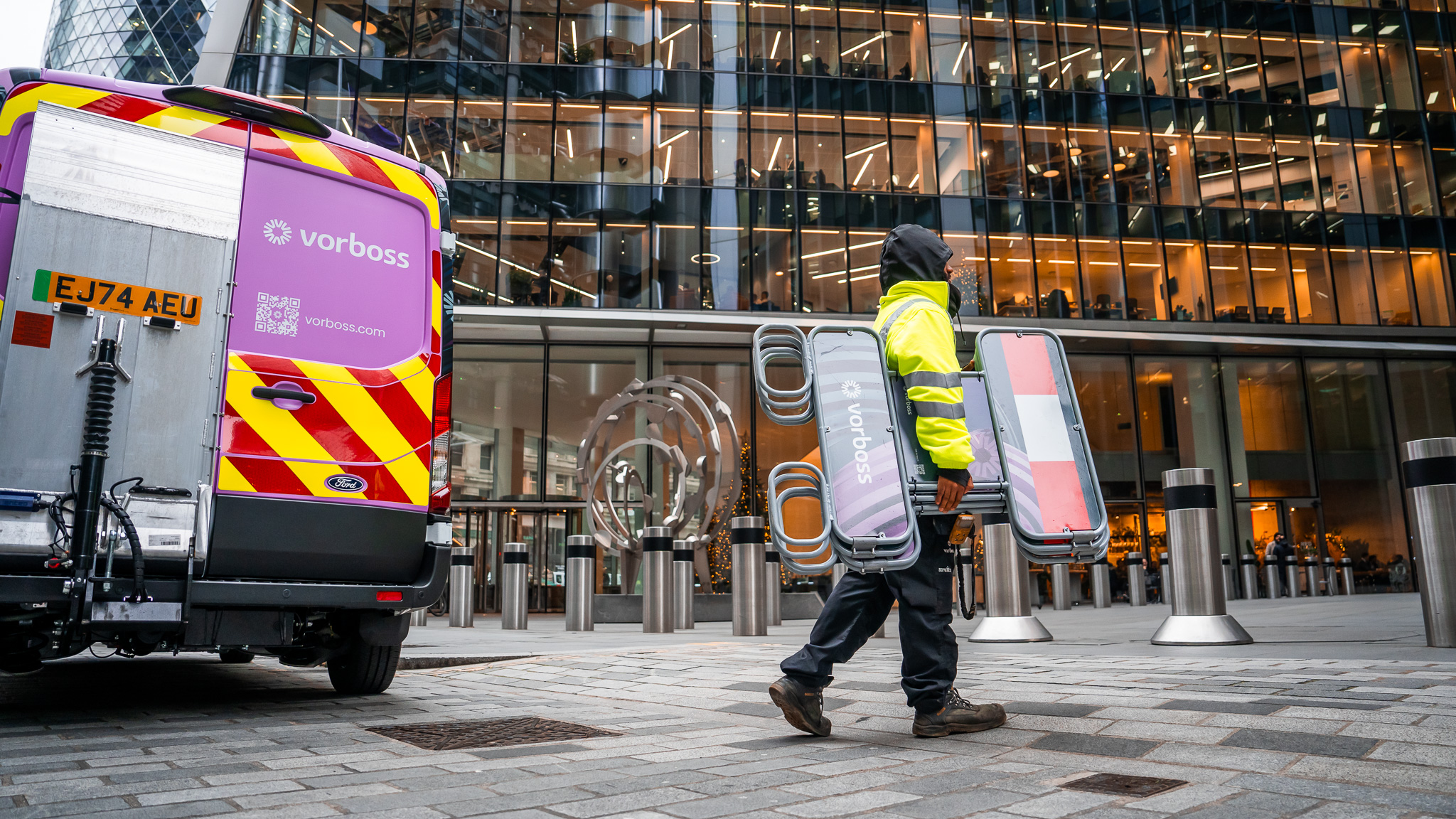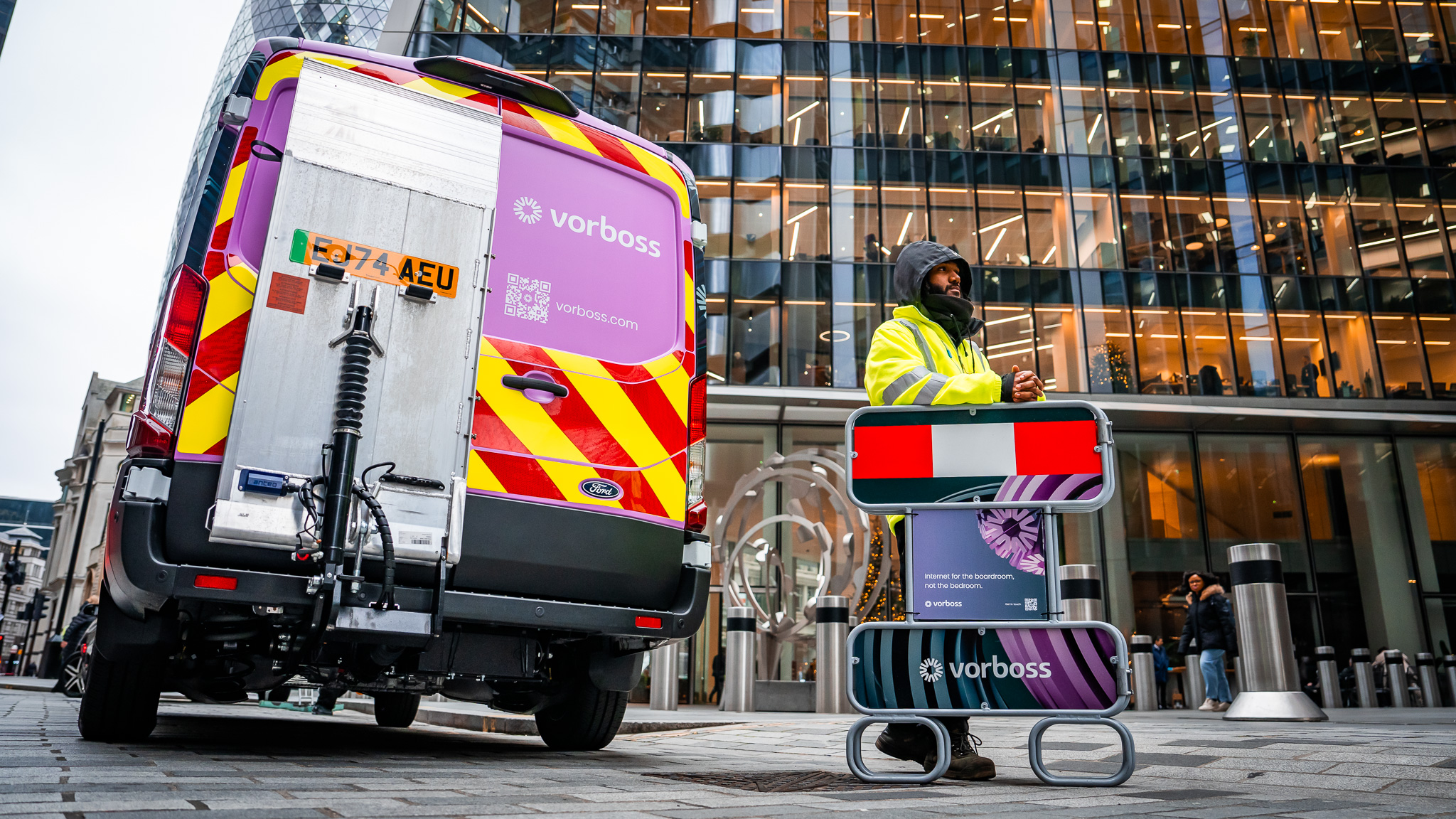Vorboss expands managed service and cybersecurity offerings, closes three strategic acquisitions
July 21, 2025
|
2
min read

Highlights
Vorboss has expanded its managed services to include cybersecurity, IT, and network management, giving London businesses a single expert provider for all their connectivity needs. Through the acquisitions of 40fi and Optimity, and investment in Layer8, Vorboss has added over 80 specialists to its team, strengthening its end-to-end service offering for UK businesses.
London, 17 July 2025
Vorboss, London’s leading fibre network built exclusively for business, today announced the expansion of its managed services portfolio, reinforcing its position as the trusted single provider for the city’s enterprise connectivity needs. This strategic move reflects the growing demand for comprehensive, resilient services from a single, expert partner – particularly in light of the increasing complexity of cybersecurity threats and IT infrastructure.
- London businesses can now consolidate connectivity, managed services, and cybersecurity, backed by the fastest fibre network built exclusively for businesses
- Completed acquisitions of 40fi (cybersecurity) and Optimity (managed services), and strategic investment in Layer8 (network management for commercial real estate)
- 80+ new specialists join Vorboss, expanding total workforce to nearly 400
As part of this strategy, Vorboss has closed three acquisitions designed to broaden its capabilities beyond its core strength in managed network infrastructure. Among these are 40fi, a respected cybersecurity business, and Optimity, a leading provider of managed IT services. Together, these acquisitions bring an additional 80 experienced professionals into the Vorboss team, significantly enhancing the company’s ability to deliver end-to-end solutions for London’s most demanding businesses. Vorboss is excited to welcome the hundreds of customers that Optimity and 40fi serve across the UK today, and look forward to continuing the high levels of customer service and technical expertise currently provided.
This expansion addresses a clear and urgent need from Vorboss customers: the ability to consolidate connectivity, IT, and security under one accountable provider. By integrating cybersecurity expertise and managed IT services capabilities into its offering, Vorboss is now uniquely positioned to provide a comprehensive suite of services – spanning secure network infrastructure, endpoint management, threat mitigation, and strategic IT and cybersecurity consultancy.

Tim Creswick, Vorboss Founder:
“Vorboss has a long history in managed services, but for the last 6 years, our focus has been on delivering the best enterprise fibre network London has ever seen. That has been a huge project, commanding millions of hours of labour from our team, and we are now connecting thousands of business customers to that network – all at 10Gbps and above. I’m excited that we’re now able to return to some of our managed services roots, with the timely addition of cybersecurity services. These are things that our customers and partners ask us about all the time. As operators of extensive, high-capacity infrastructure, we have a huge amount of real expertise in-house already, so customers know that they’re getting advice from real practitioners, not just consultants.
The addition of the Optimity and 40fi teams gives us some immediate scale to address those customer needs, with the same vertically integrated, high quality approach that they’ve come to love from us”.
In addition, Vorboss has also invested in Layer8, a first-of-a-kind software platform enabling building operators to automate, manage, and monetise their networks. Designed for commercial real estate environments, Layer8 gives building managers, managed service providers (MSPs), and non-technical users simple, secure control over on-site network infrastructure.
Tim:
“Layer8 is a fantastic business – a great example of UK entrepreneurship in a co-founder led, innovative software company that has already proven a path to revenue. I’m excited that the culture at Vorboss, and our highly technical, software-first approach has meant that we can be a great home for the business through the next stage of growth. Layer8 provides a market-leading platform to landlords and building operators, so the opportunities for both businesses will be huge. It’s also something that our partners will love too.”
Customers will now have the option to purchase a complete suite of managed IT, cybersecurity, and connectivity services from Vorboss – either bundled together or individually, to suit their requirements.
Vorboss will also extend these new capabilities to their channel partners, enabling them to expand their own offerings. As always, Vorboss remains committed to a neutral approach – empowering the channel rather than competing with it.
Tim:
“A lot of our channel partners struggle with the scale to provide some of these services, especially in a market where it’s increasingly difficult to attract cybersecurity talent. We’re able to support those needs with our now 400-strong team, and Central London HQ. We know that many of our partners have deep, trusted relationships with their customers – our approach has always been to serve the customer the way they prefer – and for many that is by working with a trusted partner.”
These acquisitions solidify Vorboss as London’s leading technology partner for business and add valuable capabilities relevant to businesses across the UK. The unique, high capacity network, and associated capabilities underpins a strong position in a market where customers are growing tired of legacy providers, and legacy infrastructure.
Tell us about yourself so we can serve you best.
Got a question?
More articles

For many landlords and building managers, the word “wayleave” feels like the responsible route whenever a fibre circuit is being installed on their property. It sounds formal and safe – a neat legal box to tick.
In many cases, however, a wayleave adds unnecessary complexity and delays, frustrates tenants, and can expose landlords to long-term legal risks.
At Vorboss, we’ve connected thousands of office spaces across London without a wayleave, keeping landlords in full control and getting tenants online faster.

What is a wayleave?
A wayleave is a written agreement between a landowner and a telecoms operator. It gives the operator permission to install and keep equipment on private property.
What many people don’t realise is that signing a wayleave also activates “Code rights” under the Electronic Communications Code. These rights go beyond simple permission, they give the operator legal powers to stay on the property indefinitely, access it when needed, and even refuse removal of their equipment in certain situations.
For a typical connection into a commercial building in London, a wayleave can make the fibre installation process slower, more expensive, and limit the landlord’s flexibility long term.
Why a wayleave isn’t required for standard in-building fibre connections
For a standard in-building fibre connection serving a tenant, a wayleave isn’t a legal requirement. Important protections, like building access, fire safety, repairing any damage, and removing equipment, are already covered by the tenant’s lease and usual building rules.
If no wayleave is signed, no Code rights are triggered, meaning the landlord retains full control and the installation exists under a simple, fully revocable licence.
In practice, this gives landlords far more protection and flexibility:
- No legal lock-in – the telecoms operator has no long-term rights to stay or refuse removal.
- Landlords keep full control – equipment can be moved or removed when the building changes.
- Faster fibre installation – no time lost in drafting contracts or solicitor reviews.
- Happier tenants – connections go live quicker; tenants get to move in faster.
By contrast, signing a wayleave and granting Code rights introduces a complex and expensive legal process for any fibre removal or relocation. This can take at least 18 months, plus potential court or tribunal proceedings, making it slower, and far less flexible for the landlord.

Public services across central London are evolving, and the City of London Corporation is leading the way.
Whether you work, live or study in the Square Mile, you’ll soon feel the difference that faster, more dependable connectivity brings.

What is the Future Network Programme?
The City of London Corporation is rolling out the Future Network Programme, a major project to modernise its entire digital infrastructure and bring everything under one unified network.
From offices and schools to iconic green spaces like Hampstead Heath, cultural destinations like the Barbican, and historic markets such as Leadenhall and Old Spitalfields, this upgrade will mean more reliable connectivity across the City’s buildings and public spaces.
It also extends to essential services, including critical sites run by the City of London Police. This enhanced connectivity will support everything from secure communication systems to faster, more resilient networks for emergency operations.
Leading this transformation is Roc Technologies, supported by Juniper Networks and Palo Alto Networks; all powered by the Vorboss fibre network. Together, we’re bringing the City onto a modern digital foundation that’s ready to support its future.
Who the Future Network Programme benefits and how?
The programme is designed for everyone who depends on public services in the Square Mile:
- Students in City-run schools will have fast, reliable connectivity to fully access digital learning tools.
- Public-sector teams will experience smoother hybrid working, better access to online platforms, and more efficient collaboration across locations.
- Residents and visitors will see improvements in public Wi-Fi, digital services, and online access in libraries, community hubs, and other shared spaces.
- The City of London Police will gain a more secure, faster and resilient network that enhances CCTV reliability and enables more effective frontline operations.

.avif)

.avif)

